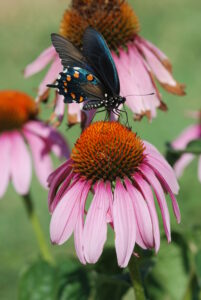Benefits of Using Native Plants
go.ncsu.edu/readext?830049
en Español / em Português
El inglés es el idioma de control de esta página. En la medida en que haya algún conflicto entre la traducción al inglés y la traducción, el inglés prevalece.
Al hacer clic en el enlace de traducción se activa un servicio de traducción gratuito para convertir la página al español. Al igual que con cualquier traducción por Internet, la conversión no es sensible al contexto y puede que no traduzca el texto en su significado original. NC State Extension no garantiza la exactitud del texto traducido. Por favor, tenga en cuenta que algunas aplicaciones y/o servicios pueden no funcionar como se espera cuando se traducen.
Português
Inglês é o idioma de controle desta página. Na medida que haja algum conflito entre o texto original em Inglês e a tradução, o Inglês prevalece.
Ao clicar no link de tradução, um serviço gratuito de tradução será ativado para converter a página para o Português. Como em qualquer tradução pela internet, a conversão não é sensivel ao contexto e pode não ocorrer a tradução para o significado orginal. O serviço de Extensão da Carolina do Norte (NC State Extension) não garante a exatidão do texto traduzido. Por favor, observe que algumas funções ou serviços podem não funcionar como esperado após a tradução.
English
English is the controlling language of this page. To the extent there is any conflict between the English text and the translation, English controls.
Clicking on the translation link activates a free translation service to convert the page to Spanish. As with any Internet translation, the conversion is not context-sensitive and may not translate the text to its original meaning. NC State Extension does not guarantee the accuracy of the translated text. Please note that some applications and/or services may not function as expected when translated.
Collapse ▲Using native plants in your landscape has many benefits —for you, your community, and wildlife.

Carolina anole on rattlesnake master (Eryngium yuccifolium) Image by Debbie Roos
- Biodiversity and ecosystem services — Native plants play an essential role in supporting biodiversity and healthy ecosystems.
- Beauty — many native plants have lovely, showy flowers in spring, brilliant foliage in fall, and attractive, abundant fruits and seeds that attract beautiful birds and other wildlife.
- Connection to natural history — when a limited selection of exotic species dominates landscapes from coast to coast, there is no sense of place.
- Birds — 6,000 to 10,000 caterpillars are needed to raise a single nest of chickadees! Adult birds may feed on insects, seeds, and berries, but chicks require a diet of insects to provide the protein for development. Native caterpillars have co-evolved with native plants and many have a very specific host plant. No native host plants lead to no caterpillars, which leads to no birds. Many non-native species are selected specifically because they are resistant to caterpillars.
- Insects— Landscaping with native plants sustains native insect populations, ensuring these insects are available for birds, mammals, and other organisms that rely on insects for food. However, since they co-evolved with native insects, they are unlikely to be seriously damaged by native insects.

- Balance Habitat Loss—Due to human population growth, we are losing wildlife habitat at an alarming rate. You can help balance this loss by including native plants in your landscape and encouraging others in your neighborhood to include natives.
- Create a Rich Wildlife Habitat —Avoid the common landscaping mistake of planting only one (or a few) species across a large area. This provides little or no wildlife value. Instead, integrate a variety of native plants into your landscape.
- Avoid Spreading Invasive Non-Natives —Including native plants in your landscape helps limit the chances that potentially invasive, non-native plant species will be introduced into the environment around your home. Many of the invasive, non-native plant species present in the South’s natural areas today were introduced as landscape plantings many decades ago. Since it takes years to determine whether a plant will become invasive, the continued introduction of new non-native plants into suburban landscapes may result in many new invasive plants in the future.
Use the Extension Gardener Plant Toolbox to select native plants that will thrive in your landscape.


